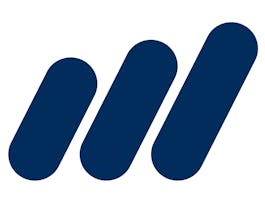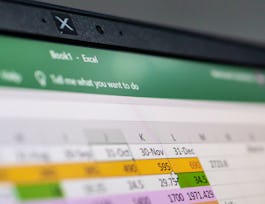This course, developed at the Darden School of Business at the University of Virginia and taught by top-ranked faculty, will teach you the tools you'll need to understand the fundamentals of financial accounting. Concise videos, the financial records of a small business, and "your turn" activities guide you through the three most commonly used financial statements: the Balance Sheet, the Income Statement, and the Statement of Cash Flows. Beyond recording transactions, you'll learn how to prepare these financial statements, and read and analyze them to draw basic conclusions about a company's financial health.



Financial Accounting Fundamentals
This course is part of Entrepreneurship: Growing Your Business Specialization

Instructor: Luann J. Lynch
Sponsored by Syrian Youth Assembly
162,428 already enrolled
(2,703 reviews)
Recommended experience
What you'll learn
How to use journal entries to record transactions and prepare and use t-accounts to summarize transactions recorded during an accounting period
The three most commonly used financial statements and how they fit together
How to prepare these financial statements based on transactions recorded during an accounting period
How to draw basic conclusions about a company's financial health
Skills you'll gain
Details to know

Add to your LinkedIn profile
10 assignments
See how employees at top companies are mastering in-demand skills

Build your subject-matter expertise
- Learn new concepts from industry experts
- Gain a foundational understanding of a subject or tool
- Develop job-relevant skills with hands-on projects
- Earn a shareable career certificate


Earn a career certificate
Add this credential to your LinkedIn profile, resume, or CV
Share it on social media and in your performance review

There are 5 modules in this course
During this first week, we’ll learn about the context for financial accounting, including the informational role it plays for both internal and external audiences. We’ll explain accounting standards, which ensure financial information is conveyed clearly and effectively. Finally, we’ll describe the three primary financial statements as part of a recurring accounting process, called the accounting cycle, and then dive into one of those statements: the Balance Sheet (BS).
What's included
14 videos2 readings2 assignments1 discussion prompt
After learning about the Balance Sheet, we’re ready to move on to using journal entries to record transactions, then t-accounts to summarize transactions recorded during an accounting period. We’ll apply those tools to record transactions for a fictional startup company, The Garden Spot, during its first year of operations (TGS Year 1). As we go along, we’ll also evaluate the effect of transactions on the balance sheet equation to ensure it remains balanced.
What's included
13 videos2 assignments1 discussion prompt
Now that we’ve learned the fundamentals of recording transactions, we’re ready to dive into another financial statement: the Income Statement (IS). After learning about the Income Statement, we’ll record revenue and expense transactions, and summarize these transactions in a special account. Finally, we'll record adjusting entries in accordance with accrual accounting, prior to the preparation of the financial statements.
What's included
14 videos2 assignments1 discussion prompt
After learning about the Income Statement, revenue and expense transactions, and adjusting entries, we’re ready to move on to preparing our end-of-period financial statements. We’ll prepare the Income Statement and Balance Sheet based on the transactions that have been recorded. Then, we’ll dive into the Statement of Cash Flows (SCF) and learn how to prepare that financial statement. Finally, we’ll briefly discuss closing entries, since we've been preparing them as we've been going along!
What's included
16 videos2 assignments1 discussion prompt
During this last week, we’ll walk through the second year of operations for our fictional startup company, The Garden Spot (TGS Year 2), for additional practice recording transactions and preparing our end-of-period financial statements. Then, we’ll do some analysis of The Garden Spot’s financial statements. Finally, we’ll take a look at PepsiCo’s Annual Report as an example of reporting for a publicly traded U.S. company.
What's included
16 videos2 assignments1 discussion prompt
Instructor

Offered by
Why people choose Coursera for their career




Learner reviews
2,703 reviews
- 5 stars
85.51%
- 4 stars
12.59%
- 3 stars
1.14%
- 2 stars
0.36%
- 1 star
0.36%
Showing 3 of 2703
Reviewed on Dec 4, 2021
it is so easy to learn, in this course makes me really easy to understand, have a practice how can make me more understand, and how they are explain its really good, thank you so much
Reviewed on Mar 8, 2023
Great course by all standards, the flair, and tact with which Professor Lynch presents the content of accounting is concise and down to earth and for me is a great mark of class.
Reviewed on Sep 22, 2020
it was really good step by step learning. being a business head i knew most of the things but this course really helped to brush up and refresh all what i knew in systematic manner.
Recommended if you're interested in Business

Coursera Project Network

Corporate Finance Institute

University of California, Irvine

Open new doors with Coursera Plus
Unlimited access to 10,000+ world-class courses, hands-on projects, and job-ready certificate programs - all included in your subscription
Advance your career with an online degree
Earn a degree from world-class universities - 100% online
Join over 3,400 global companies that choose Coursera for Business
Upskill your employees to excel in the digital economy



